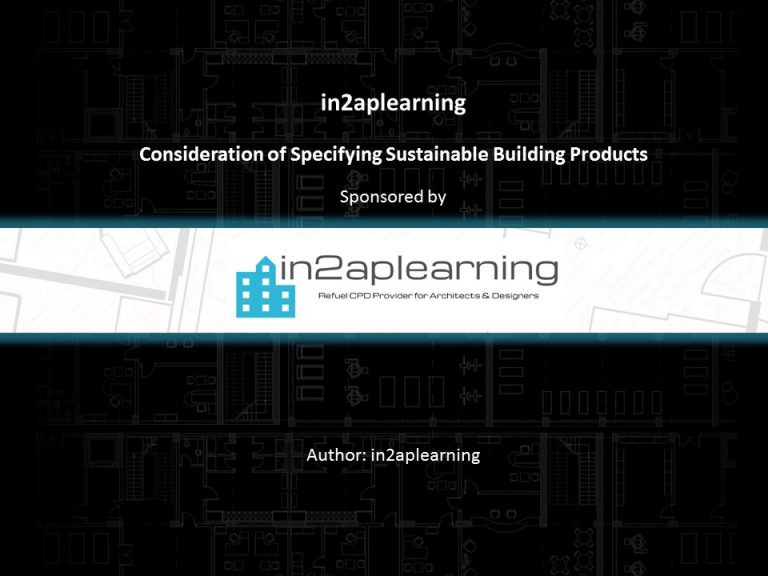What Are The Architectural Considerations For Designing Sustainable Workplaces?

When it comes to building and construction, we all want to incorporate sustainable practices. It is the responsibility of architects and builders to make sure that the materials they use are eco-friendly, cost-effective and efficient. However, it can be tricky to navigate the world of sustainable architectural building products. Fear not! Here are some considerations to keep in mind when specifying these types of building products:
1. Renewable Materials
One of the most important aspects of sustainable buildings is the use of renewable materials. Choose materials that can be naturally restored or replenished. This includes materials like timber, cork, bamboo and straw. By using renewable materials, we can reduce our carbon footprint and pave the way for a more sustainable future.
2. Energy-Efficient Lighting
Lighting can account for up to 25% of a building’s energy consumption. To combat this, make sure to specify energy-efficient lighting products such as LED lights or CFL bulbs. These types of lighting not only consume less energy, but they also last longer, cutting down on maintenance costs.
3. Low VOC Paints
Traditional paints emit volatile organic compounds (VOCs) that can harm indoor air quality. Make sure to specify low VOC paints that are non-toxic, odorless and improve air quality. These paints are also resistant to mildew and mold, reducing the need for expensive and harmful cleaning products.
4. Insulation
Insulation is crucial in any building project as it regulates temperature and reduces energy use. When selecting insulation, make sure to pick materials that are made from sustainable resources. This includes materials like cellulose, recycled denim and sheep wool.
5. Water-Saving Fixtures
Water conservation is essential for sustainable construction practices. Specify water-saving fixtures that reduce water use without compromising performance. This includes low-flow toilets, low-flow showerheads and faucets that save water while maintaining water pressure.
6. Recycled Materials
Recycling is a crucial component of sustainable architecture. Utilize recycled materials whenever possible. This includes materials like recycled steel, concrete, and plastic lumber. Not only are they eco-friendly, but they are also cost-effective and durable.
7. Sustainable Timber
Timber is a popular material in construction, but it can have a significant impact on the environment if harvested irresponsibly. Choose timber products that are certified by the Forest Stewardship Council (FSC). This certification ensures that the timber has been harvested with responsible forest management practices.
8. Solar Panels
Renewable energy sources like solar panels can help reduce dependence on traditional energy sources. Adding solar panels to a building can lower energy bills and reduce greenhouse gas emissions. Specify high-quality solar panels for maximum efficiency and longevity.
FAQ
1. How much can sustainable architectural building products save me?
The cost savings of sustainable architectural building products can depend on several factors, including the type of product, the size and use of the building and the geographical location. However, using these products can result in significant cost savings over time, particularly in energy and water usage.
2. Can sustainable architectural building products perform as well as traditional building products?
Yes! Sustainable architectural building products can perform just as well, if not better, than traditional building products. In fact, many of these products have a longer lifespan and require less maintenance, resulting in even greater cost savings.
3. Are sustainable architectural building products more expensive?
In some cases, sustainable architectural building products may have a higher upfront cost than traditional building products. However, the cost savings from energy and water use reduction, along with potential tax credits, make the investment worthwhile in the long term.
4. Are there any drawbacks to using sustainable architectural building products?
One of the potential drawbacks is that some products may not be readily available in certain locations. However, as the demand for sustainable architecture increases, these products will become more widely available. Additionally, some products may require specialized knowledge or training for installation.
In conclusion, sustainable architectural building products are an essential component of modern construction. They offer a wide range of benefits, including cost savings, environmental protection, and energy efficiency. By keeping these considerations in mind when specifying building products, we can create sustainable and eco-friendly buildings that benefit everyone.



Post a Comment for "What Are The Architectural Considerations For Designing Sustainable Workplaces?"